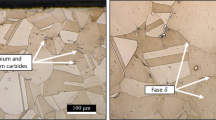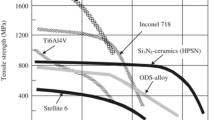Abstract
The manufacturing industry is rapidly moving towards sustainability, emphasizing the need for an innovative cooling system and medium that does not lead to undesirable consequences during disposal. Cooling of the tool-work interface is an essential process in machining which is traditionally accomplished using cutting fluids with various application strategies. Over the years, several techniques have been proposed and utilized to serve the purposes such as cooling the aforesaid region while washing away the chips produced through machining. However, several undesirable consequences to human and environmental wellness due to the use of cutting fluids have been reported in a number of research articles. Efforts to address this chronic issue have yielded seemingly viable solutions, such as minimum quantity lubrication (MQL) and cold air cooling (CAC), which have apparently produced surface characteristics in workpieces close to those achieved with conventional tool cooling techniques. In the light of above, the current study utilizes a thermoelectric cooling system to evaluate the after-machining effects in the absence of cutting fluids during the machining of Inconel 825 superalloy, thereby demonstrating its feasibility and potential in further research.








Similar content being viewed by others
References
Kui GWA, Islam S, Reddy MM, Khandoker N, Chen VLC (2022) Recent progress and evolution of coolant usages in conventional machining methods: a comprehensive review. Int J Adv Manuf Technol 119(1-2):3–40
Junge T, Mehner T, Nestler A, Schubert A, Lampke T (2022) Surface properties in turning of aluminum alloys applying different cooling strategies. Procedia CIRP 108:246–251
Tamang SK, Chandrasekaran M, Sahoo AK (2018) Sustainable machining: an experimental investigation and optimization of machining Inconel 825 with dry and MQL approach. J Braz Soc Mech Sci Eng 40:1–18
Itoigawa F, Childs THC, Nakamura T, Belluco W (2006) Effects and mechanisms in minimal quantity lubrication machining of an aluminum alloy. Wear 260(3):339–344
Ginting YR, Boswell B, Biswas W, Islam MN (2015) Investigation into alternative cooling methods for achieving environmentally friendly machining process. Procedia CIRP 29:645–650
Mahesh K, Philip JT, Joshi SN, Kuriachen B (2021) Machinability of Inconel 718: a critical review on the impact of cutting temperatures. Mater Manuf Process 36(7):753–791
Thakur A, Gangopadhyay S, Mohanty A (2015) Investigation on some machinability aspects of Inconel 825 during dry turning. Mater Manuf Process 30(8):1026–1034
Thakur A, Gangopadhayay S, Maity KP (2013) Surface integrity of Inconel 825 when turning with uncoated and CVD coated carbide inserts. Int Conf Precision Meso Micro Nano Eng 1–5
Dixit US, Sarma DK, Davim JP (2012) Dry machining. In: Environmentally friendly machining. Springer, Boston, MA, pp 19–28
Achar BP, D’Mello G, Gururaj K (2019) Use of vortex tube air cooling during machining of Inconel 718: experimental investigation and modeling studies. J Mech Eng Res Dev 127–131
Patwari MAU, Habib MA, Ehsan MT, Ahnaf MG, Chowdhury MS (2017) An innovative green cooling approach using Peltier chip in milling operation for surface roughness improvement. Int J Manuf Eng 11(7):1303–1307
Yip WS, To S (2020) Preliminary investigation on ultra-precision diamond turning of titanium alloys using thermoelectric cooler fixture. J Manuf Process 58:187–192
Nikolić RH, Lučić MV, Nedić BP, Radovanović MR (2019) Calculation of temperature fields during lathe machining with thermoelectric cooling by using the finite element method. Therm Sci 23(3 Part B):1889–1899
Sreenivasulu R, Valeti KT (2021) Non traditional cooling technique using Peltier effect for single point boron carbide (B4C) cutting tool doping with titanium carbide (TiC). J Mech Energy Eng 5
O'Shaughnessy SM, Sloane A, Kearns A, Byrne G, Trimble D, O'Donnell GE (2018) Design, characterisation and performance evaluation of a Peltier-driven cryo-adhesive fixture for manufacturing operations. Mater Des 141:99–109
Thakur A, Mohanty A, Gangopadhyay S, Maity KP (2014) Tool wear and chip characteristics during dry turning of Inconel 825. Procedia Mater Sci 5:2169–2177
Mall G, Hubig M, Beier G, Eisenmenger W (1998) Energy loss due to radiation in postmortem cooling: part A: quantitative estimation of radiation using the Stefan-Boltzmann law. Int J Legal Med 111:299–304
Kromka A, Janík J, Satka A, Pavlov J, Cˇerven I (2001) Investigation of carburisation of tungsten-carbide formation by hot-filament CVD technique. Acta Physica Slovaca 51
Devillez A, Le Coz G, Dominiak S, Dudzinski D (2011) Dry machining of Inconel 718, workpiece surface integrity. J Mater Process Technol 211(10):1590–1598
Thakur DG, Ramamoorthy B, Vijayaraghavan L (2009) Study on the machinability characteristics of superalloy Inconel 718 during high speed turning. Mater Des 30(5):1718–1725
Andersson C, Andersson M, Ståhl JE (2011) Experimental studies of cutting force variation in face milling. Int J Mach Tools Manuf 51(1):67–76
Venkatesan K, Manivannan K, Devendiran S, Mathew AT, Ghazaly NM, Benny SN (2019) Study of forces, surface finish and chip morphology on machining of Inconel 825. Procedia Manuf 30:611–618
Author information
Authors and Affiliations
Contributions
All authors contributed to the study conception and design. Material preparation, data collection, and analysis were performed by D, P, and I. The first draft of the manuscript was written by P and R, and all authors commented on previous versions of the manuscript. All authors read and approved the final manuscript.
Corresponding author
Ethics declarations
Conflict of interest
The authors declare no competing interests.
Additional information
Publisher’s Note
Springer Nature remains neutral with regard to jurisdictional claims in published maps and institutional affiliations.
Rights and permissions
Springer Nature or its licensor (e.g. a society or other partner) holds exclusive rights to this article under a publishing agreement with the author(s) or other rightsholder(s); author self-archiving of the accepted manuscript version of this article is solely governed by the terms of such publishing agreement and applicable law.
About this article
Cite this article
Prabakaran, J., David, A., Russel, M.R.P. et al. Thermoelectric cooling for machining of In 825 superalloy—an experimental study. Int J Adv Manuf Technol 130, 4387–4396 (2024). https://doi.org/10.1007/s00170-024-12997-y
Received:
Accepted:
Published:
Issue Date:
DOI: https://doi.org/10.1007/s00170-024-12997-y




